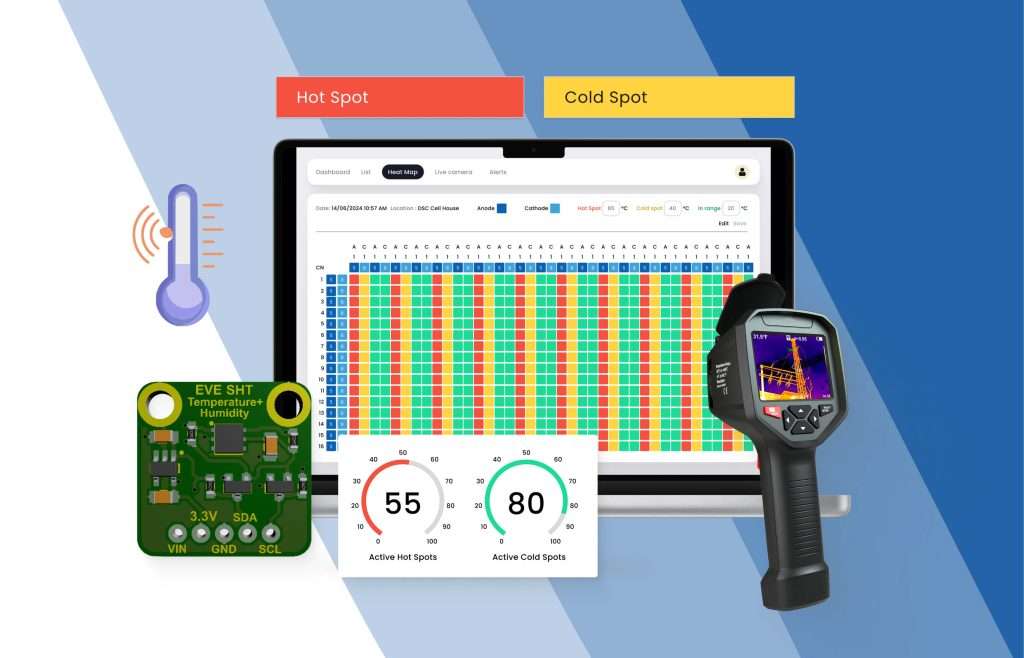AI/ ML - Computer Vision
AI/ ML
Computer Vision
Empower your IoT solutions with Computer Vision—enabling intelligent image analysis, real-time object detection, and actionable visual insights across a wide range of applications.
What is Computer Vision?
Computer Vision is a transformative branch of Artificial Intelligence (AI) that enables machines to perceive, interpret, and act upon visual data—simulating the power of human vision. By integrating Computer Vision into IoT systems, devices can gain real-time situational awareness, automate complex tasks, and make faster, smarter decisions based on their surroundings.
Applications:
Transportation
Power intelligent systems like Advanced Driver Assistance Systems (ADAS), real-time traffic surveillance, and autonomous vehicle navigation for safer, smarter mobility.
Industrial Automation
Enable predictive maintenance, detect anomalies, and streamline operations through automated visual inspection and process intelligence.
Wearable Technology
Upgrade smartwatches and fitness trackers with AI-driven health monitoring, gesture recognition, and context-aware features.
Healthcare
Accelerate diagnostics and remote patient monitoring through high-resolution medical imaging and AI-assisted analysis.
Retail
Drive smarter retail operations with automated checkout, inventory tracking, customer behavior analytics, and facial recognition systems.
Features
High Accuracy
Leverages state-of-the-art deep learning models for precise object recognition, classification, and tracking.
Cross-Platform Compatibility
Optimized for seamless performance across edge devices, embedded systems, and cloud-based environments.
Real-Time Visual Processing
Executes high-speed image analysis with ultra-low latency, ensuring responsiveness in time-sensitive applications.
Scalable Architecture
Adapts from small-scale prototypes to enterprise-level deployments with minimal reengineering.
Native IoT Integration
Integrates effortlessly with IoT platforms using RESTful APIs, MQTT, and widely supported frameworks for end-to-end system orchestration.
Use Cases
Hotspot Detection in Industrial Environments
Computer Vision integrates with thermal camera systems mounted on cranes to identify and respond to abnormal temperature zones. UNet-based models process thermal imagery to detect hotspots and coldspots in real time. The backend is powered by Python and Flask, while PostgreSQL handles data storage. A ReactJS-based dashboard displays critical insights, enhancing operational safety, reducing downtime, and preventing equipment failures.
Lane Correctness Monitoring in Transportation
Real-time lane monitoring uses OpenCV-based vision algorithms to track lane boundaries and detect deviations. This system runs on low-power ESP32 microcontrollers, ensuring efficiency on the edge. Immediate alerts are issued to drivers, promoting compliance and drastically reducing accident rates—key for smart mobility initiatives.
Offline Face Recognition in Wearable Devices
Smartwatches equipped with offline face recognition enable secure, AI-driven identity verification for use cases like attendance logging. Built using TensorFlow and Python, the system operates without internet connectivity—making it ideal for remote or bandwidth-limited environments. This use case showcases how Computer Vision can redefine user experiences in compact IoT devices.
FAQs
Have Questions? We’re here to help.
Computer Vision in IoT refers to the integration of visual data processing capabilities into smart devices and systems. It enables real-time object detection, image analysis, and decision-making based on visual inputs from cameras and sensors.
Computer Vision enables automated quality inspection, predictive maintenance, and anomaly detection. This reduces downtime, improves product consistency, and enhances overall operational efficiency in industrial environments.
Yes. Lightweight models and frameworks like OpenCV and TensorFlow Lite allow Computer Vision to run efficiently on edge devices such as ESP32 or Raspberry Pi, enabling real-time processing without relying on cloud infrastructure.
Computer Vision in wearables enables features like offline face recognition, gesture control, and personalized health tracking. It enhances user experience while maintaining privacy and reliability, even in offline environments.
